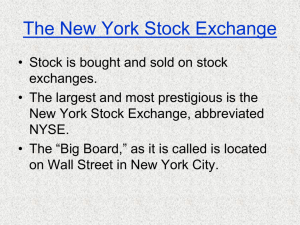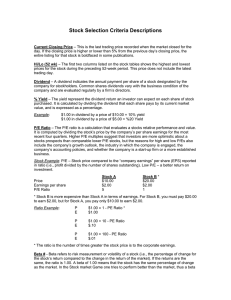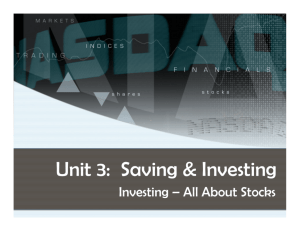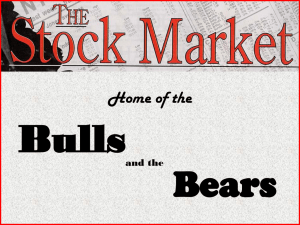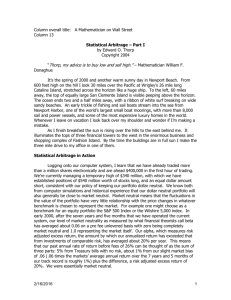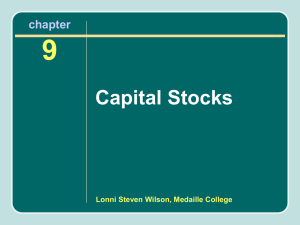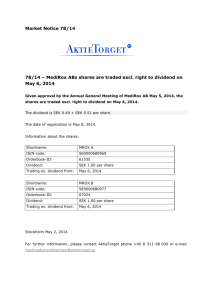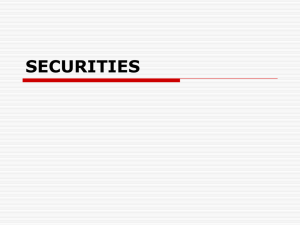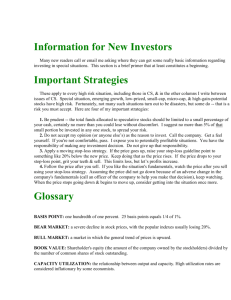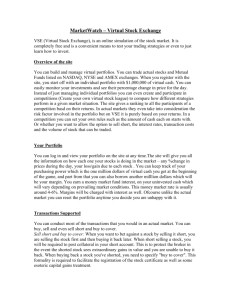Stock - EnglishTeachur
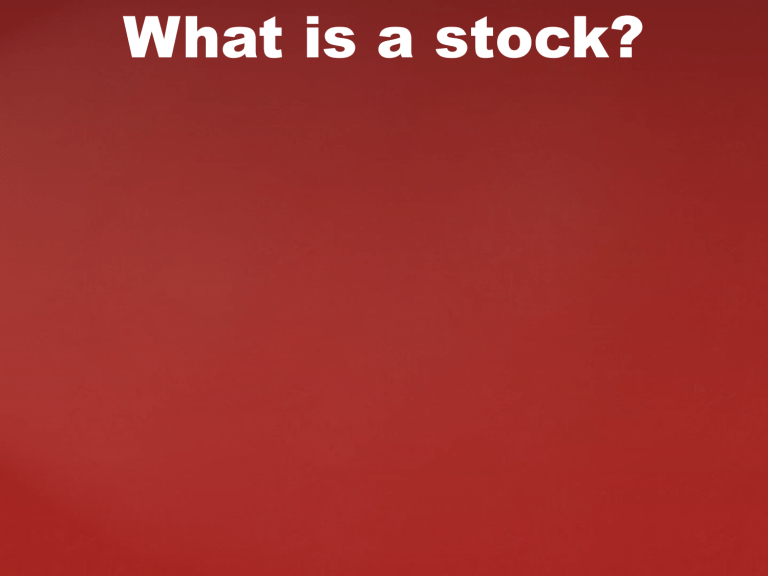
What is a stock?
Private ownership is fundamental to the operation of a market economy. This lesson introduces the idea individuals can become owners of a business by purchasing stock.
People who buy stock in corporations are owners of that corporation. They risk their money (personal wealth) on the success of the business.
Any business is risky because the future is uncertain. The owners of the business bear that risk. If the business succeeds, the owners benefit.
Economize: To base decisions on an assessment of costs and benefits, choosing the best combination of costs and benefits from among the alternatives.
Ownership: The right to use something and enjoy its benefits.
Profit: The difference between revenues and the costs entailed in producing or selling a good or service; it is a return for risk-taking.
Risk: The chance of losing money. Risk is the opposite of safety.
Stock: A share of ownership in a company.
Owners of stock receive part of the company's profits – or bare some of its losses – up to the amount of money they put into the stock.
Effective decisionmaking requires comparing the additional costs of alternatives with the additional benefits.
Most choices involve doing a little more or a little less of something: few choices are "all or nothing" decisions.
People respond predictably to positive and negative incentives.
Entrepreneurs are people who take the risks of organizing productive resources to make goods and services. Profit is an important incentive that leads entrepreneurs to accept the risks of business failure.
Why do people like to own things?
Private ownership is a powerful incentive. It allows people to enjoy the benefits of what they own.
Can people legally do anything they want with items they own?
Can you drive on the left side of the road with your car legally in the U.S.?
Can you use your clothes to tie up a student and lock him or her in a locker?
Can you use your books to start a fire in someone's living room?
Can you use your makeup to color over the computer monitor screen in school?
Then what does ownership mean?
It establishes who gets the benefits associated with the items and who bears the responsibility for what happens with them.
You get to drive your car
– no one else may without your permission
– but you are responsible for driving legally and answering for any harm you cause when you use the car.
Ownership means that privileges and responsibilities are clearly defined.
1. A stock is a fractional share of ownership of a business.
2. Stock owners are entitled to a share of a company's profits.
3. There is risk in owning any company, and stockholders share that risk.
4. Introducing a new product is a risky venture for companies.
NYSE/NASDAQ Made
Easy
Definitions:
The following terms can be found on a stock ticker.
F INDING F INANCIAL
I NFORMATION O NLINE
Stock: the shares of a particular company or corporation.
Mutual Fund: an investment company that issues shares continuously and is obligated to repurchase them from shareholders on demand.
Bond: a sealed instrument under which a person, corporation, or government guarantees to pay a stated sum of money on or before a specified date.
SPRINT NEXTEL
CORP
Price:
Coupon (%):
Maturity Date:
Yield to Maturity (%):
Current Yield (%):
Rating from Rating Service:
Coupon Payment Frequency:
First Coupon Date:
Type:
Callable:
118.00
9.250
15-Apr-2022
6.884
As of 22-
Dec
7.839
BB
Semi-Annual
15-Oct-1992
Corporate
No
Exchange:
An organization that provides a market place for the trading of a listed stock. The New
York Stock Exchange and Nasdaq are the biggest in the U.S.
F -
Ford Motor Company
(NYSE )
F - Ford Motor Company
(NYSE)
$10.18: -0.25 (-2.40%)
Last: Current trading price of one unit of a particular security
(stock).
Oct 19 4:00pm ET –
Open: $10.42
(Open: The price paid in a stock's first transaction of the current trading day.)
High: $10.43
(Day’s High: The highest price of the stock during the current day's trading.)
Low: $10.13
(Day’s Low: The lowest price of the stock during the current day's trading.)
Volume: 40,496,019
(Total number of shares that have been traded on the most recent trading day.)
Avg. Vol.: 37,667,000
Mkt. Cap: $38.83B
Market Cap: The value of a company's outstanding shares.
This is determined by multiplying the number of shares issued by the current price per share.
Change:
The difference between yesterday's closing price and the most recent price
(last).
% Change:
The percent change in the price of the stock versus the price at close from yesterday.
Previous Close:
The price of the stock at the end of yesterday's trading session.
Bid:
The price at which someone is willing to buy a stock. This is what you get when you sell the stock.
Ask:
The price at which a holder of a stock is willing to sell.
52 Week High:
The highest price for an individual share of stock during the past year.
52 Week Low:
The lowest price for an individual share of stock during the past year.
Price/Earnings:
This is the latest closing price divided by the latest 12 months' earnings per share.
Earnings/Share:
Total earnings divided by the number of stocks issued.
Dividend/Share:
The cash payment per share made by the company to its shareholders.
Current Dividend Yield:
The yield on a given investment based on its current price. You can calculate this by dividing the dividend paid for the year into the current price.
# Shares Outstanding:
The number of shares that have been issued and are in hands of the public.
W
HAT IS A
S
TOCK
?
Stock Questions: True or False?
1. Stocks represent ownership in a corporation.
2. People who invest in stocks cannot lose their money.
3. Mark bought 100 shares of Intel stock.
Each share sold for
$35.50. If no fees were involved, Mark paid
$3,550 for the shares.
4. The price people pay for a stock is called a dividend.
5. The closing price for a share of Wal-Mart stock was $37.25. This means that the price of the share was $37 and one-quarter of a dollar.
One quarter of a dollar is $0.20.
6. People who own stocks are guaranteed a return on the money they have invested in stocks.
7. The only way stockholders make money is through dividend payments while they own the stock.
8. One way stockholders make money is by selling their stock for more money than they paid for it.
9. Stockholders can reduce the risk on their stock investment by diversifying their portfolios.
10. The New York
Stock Exchange is the only place where people can buy and sell stocks.
Mrs. Colvin’s

